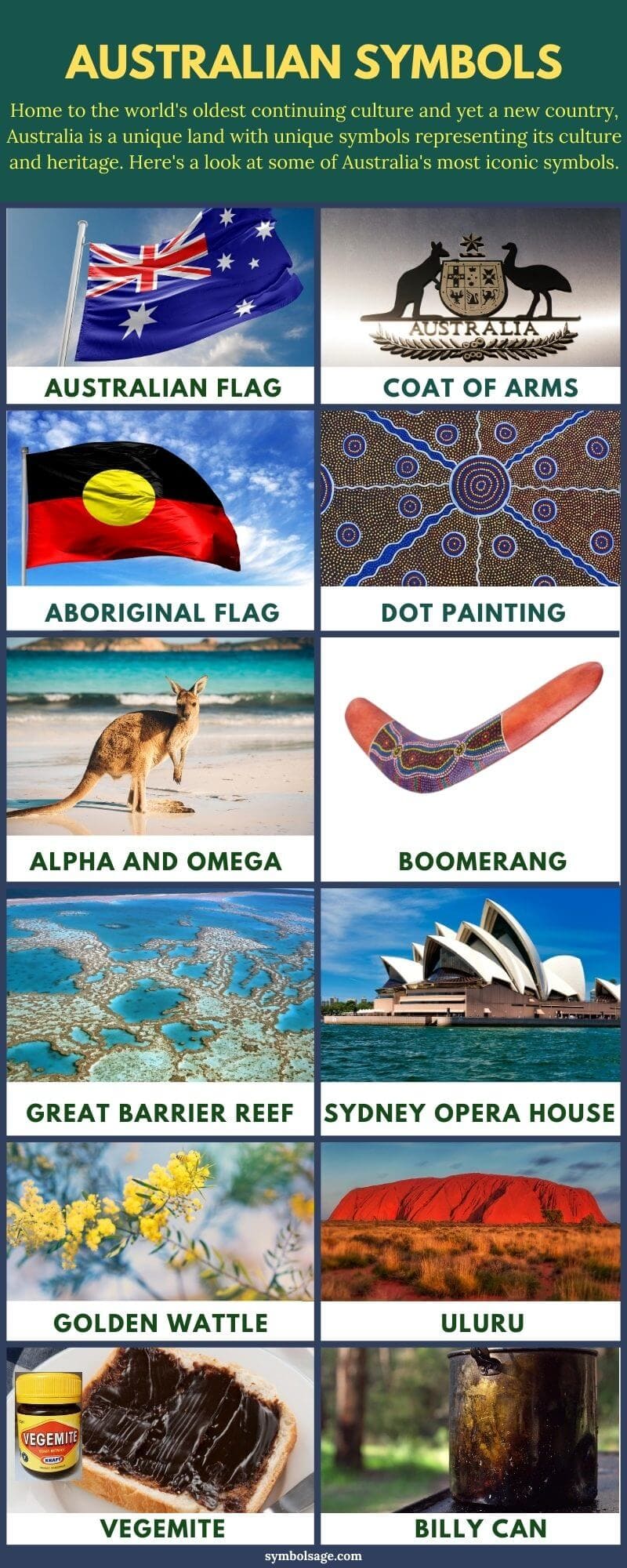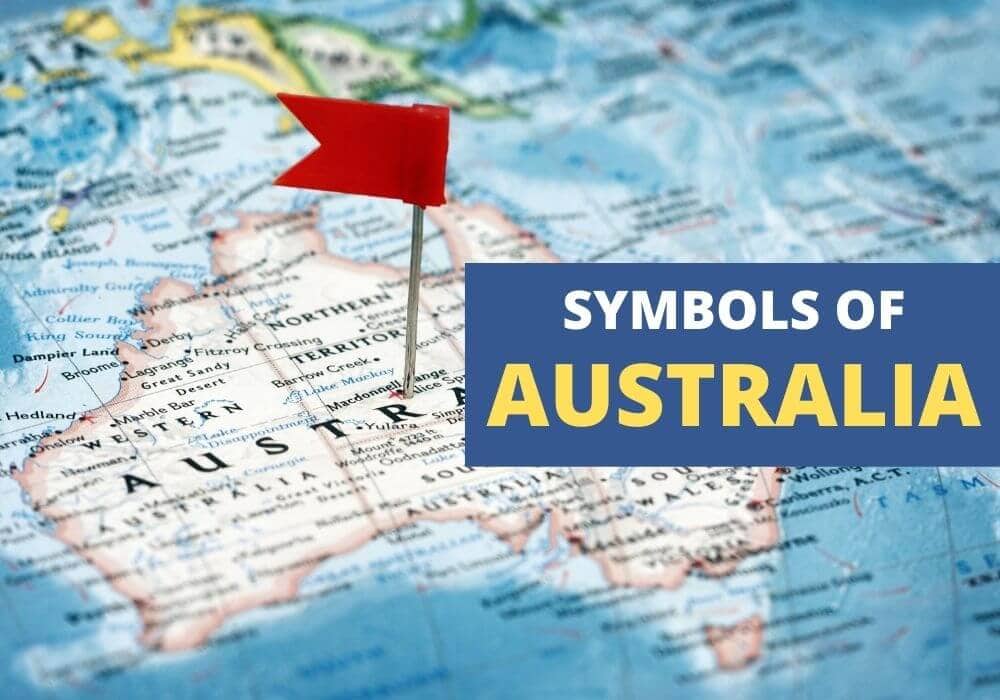
Table of Contents
Australia is a relatively new country and yet it’s the home of the world’s oldest continuing culture, the Australian Aboriginals. As such, there are both new and ancient symbols that represent the country and its distinctive national identity.
In this article, we’ll be taking a closer look at some of the most famous national and popular symbols and what they mean to Australians.
National Symbols of Australia
- National Day: 26th January
- National Anthem: Advance Australia Fair
- National Currency: Australian Dollar
- National Colors: Green and gold
- National Tree: Golden wattle
- National Flower: Golden wattle
- National Animal: Kangaroo
- National Bird: Emu
- National Dish: Roast lamb
- National Sweet: Pavlova
National Flag of Australia
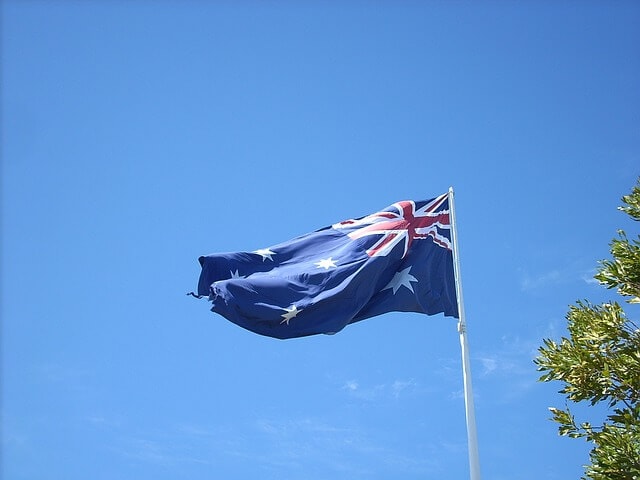
The national Flag of Australia consists of three elements placed on a blue background.
The first element is the Union Jack seen in the left upper corner, which represents the history of the British settlement in Australia.
Just below it is the Federation or White Commonwealth star with its seven points. The seven points of the star represent the unity of the six states and federal territories of the Australian Commonwealth. The star is also featured on the Commonwealth Coat of Arms.
The third element of the Australian flag is the white Southern Cross. This is a constellation of five stars, which can be seen only from the southern hemisphere and has been used to represent the country since the days of British settlement.
Coat of Arms of Australia

The Australian Coat of Arms, commonly known as the Commonwealth Coat of Arms, is one of the national symbols of Australia, first granted by King Edward VII in 1908. The emblem is composed of a shield in the center, with the symbols of Australia’s six states held up by the kangaroo on the left and the emu on the right, both of which are native Australian animals.
The seven-pointed Federation or Commonwealth Star surmounts the crest and is symbolic of the territories and states of the country. Below the shield are floral emblems featuring the national tree the wattle, which serve as a background for the symbol.
The coat of arms of Australia has been featured on Australian coins since the early 20th century and is also used as a badge of rank for army, navy and air force officers, denoting certain ranks.
Australian Aboriginal Flag
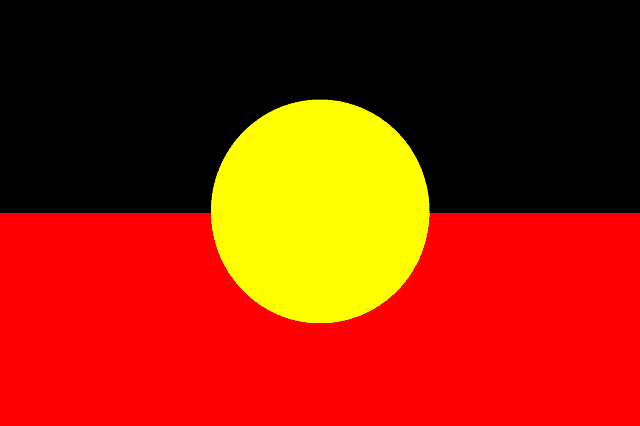
Designed by the Aboriginal artist Harold Thomas in 1971, the Australian Aboriginal Flag is a symbol of the Aboriginal people of Australia. The flag is equally and horizontally divided into two regions, one black and one red with a yellow circle superimposed over its centre.
The three colors of the flag each have a different symbolic meaning:
- Black is symbolic of the Aboriginal people of Australia
- Red represents the spiritual relation the people have to the land. It also represents the red ochre that’s often used in ceremonies and the red earth.
- The yellow circle in the center symbolizes the sun which is the protector and the giver of life.
The Aboriginal flag is always flown or displayed with the black half on the top and the red half on the bottom. In July 1995, it was proclaimed as a Flag of Australia and since then, it’s flown together with the national flag of Australia.
Dot Painting
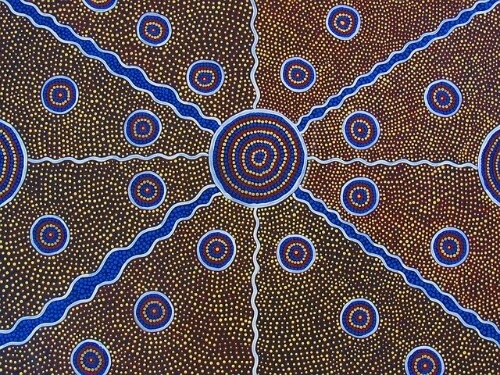
Dot painting is a specific style of art characterized by a unique technique of arranging fine dot marks on the canvas to create meaningful patterns. This is an Aboriginal style of painting, noted for its use of color and Aboriginal symbols.
There are many theories as to how dot paintings originated. It’s believed that prior to the advent of acrylic paints, these dots patterns were done on sand, as a way to pass on information to initiates. With more permanent painting techniques, Aboriginal people were able to create lasting pieces that showcase their unique art to the world.
Vegemite

Vegemite is a salty spread that’s typically eaten with buttered toast. It’s an acquired taste and most people tend to find it quite unappealing, if they aren’t used to the taste. For most Australians, however, vegemite is their preferred spread.
It was an extremely popular food product during WWII, capturing the Australian market. It was supplied by the Australian Army to troops since Marmite, a similar spread popular in England, wasn’t available at the time. In the mid-twentieth century, it spoke of Australian innocence and vitality and today it’s associated with simpler times of the past. It also symbolizes the respect that the Australian culture has for the ordinary.
At one point in history, Vegemite was used to promote multiculturalism as an idea that’s characteristically Australian. Later on, as overseas travel gradually increased, Australians began to carry Vegemite with them around the world as a way of reaffirming their link to home.
Kangaroo
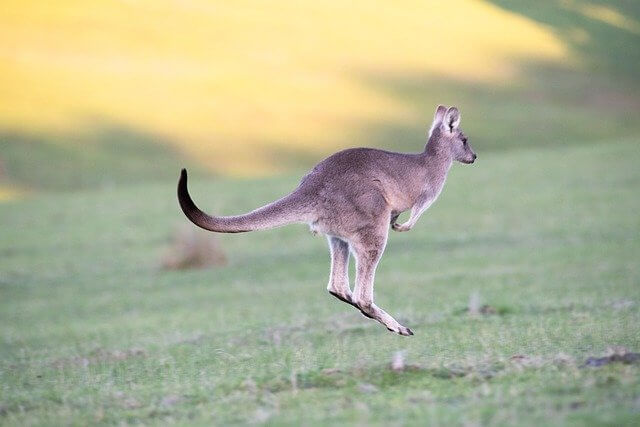
Kangaroos are the largest marsupials in the world and are indigenous to Australia. They are culturally and spiritually significant to the Australian Aboriginal people for whom their meat is a staple source of protein. Kangaroo skin was used to craft water bags and their pelts for rugs and clothing. Almost every part of the animal is used for something, with hardly anything being thrown away.
With an impressive jump of up to 8 metres, kangaroos are typically found over most of the arid areas in Australia, especially flat open plains. Some breeds of kangaroo like the ‘Black Wallaroo’ are threatened with extinction and are now under protection of the Australian Bush Heritage.
The kangaroo is also a symbol of importance in Australian Aboriginal art. Generally, it indicates abundance and gratitude which is why it’s a lucky animal totem to possess. It appears as a logo for Tourism Australia, Australian Made and also for Qantas, the famous Australian Airline.
Boomerang

The boomerang is a universally recognized symbol of Australia. For the Aboriginal people, it’s symbolic of cultural endurance. It’s also a tangible link to their presence on the continent over the years.
The boomerang has been used for centuries by the Aboriginal people and represents the links they have had to the land for the last 60,000 years. They used it as a weapon for hunting as well as for entertainment and sport. Boomerangs were first designed to bring down game and not to return back to their thrower. However, in Europe, they became acquisition items and later on, souvenirs for tourists.
Now considered one of the national symbols of Australia, the boomerang is featured in Australian military emblems. It expresses the desire that the wearer or recipient may return home ‘just like the boomerang’ itself.
Great Barrier Reef

The world’s largest coral reef network, the Great Barrier Reef lies off the coast of Queensland, Australia. It extends for over 2,300 kilometers and is made up of over 2,900 individual reefs. It’s one of the most important landmarks of Australia and a tourist hotspot.
Unfortunately, due to pollution and global warming, the Barrier Reef is experiencing significant coral bleaching, effectively killing off the coral gradually.
Billy Tin

A lightweight, cheap and versatile metal container used for cooking or boiling water over the fire, the billy was used by Australians in the past as a useful tool for the harsh bush life of Australia. By the end of the 19th century, it had become symbolic of bush life in Australia.
The billy is mentioned in the famous unofficial Australian anthem ‘Waltzing Matilda’. In this song, the swagman, a nomadic traveler searching for work:
‘sang and he watched and waited till his billy boiled’
The billy represented bush hospitality as well as the self-reliant, democratic Australian spirit. The billy is also associated with qualities considered to be characteristically Australian such as reliability and egalitarianism. Today it’s an object of nostalgia, symbolizing a simple and peaceful way of life that is now almost non-existent.
Sydney Harbour Bridge
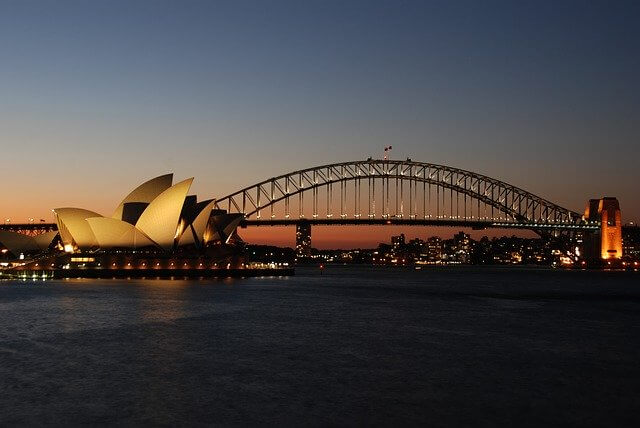
The Sydney Harbour Bridge first opened in 1932, linking the southern and northern shores of the Sydney Harbour in one single span. It took almost a decade for the completion of the steel bridge which was quick to become a major symbol used to promote immigration and tourism to Australia.
The Harbour Bridge also became a symbol of the ingenuity, modernity and progress of Australia, now considered one of the country’s most distinguished urban structures. It was also a symbolic bridge between the indigenous and non-indigenous Australians when it was crossed by about 250,000 people during the People’s Reconciliation Walk in May 2000.
Since the year 1998, New Year’s Eve celebrations in Sydney climaxed with gorgeous fireworks displays from the Sydney Harbour Bridge which was included in the Australian National Heritage List in March 2007.
Sydney Opera House

The most recognized building of Australia, and one of the most famous and distinctive buildings in the world, the Sydney Opera House is known for its stunning architectural design. It sits at the mouth of Sydney Harbor, near the Harbor Bridge, with the building resembling the sails of a ship.
The Opera House has multiple venues for performing arts events. It’s often lit up to advertise various events or to make a statement. For example, when marriage equality was legalized in Australia, the sails of the Opera House were lit up in rainbow colors. The Opera House remains one of the most iconic buildings of Australia and a UNESCO World Heritage Site.
Wattle
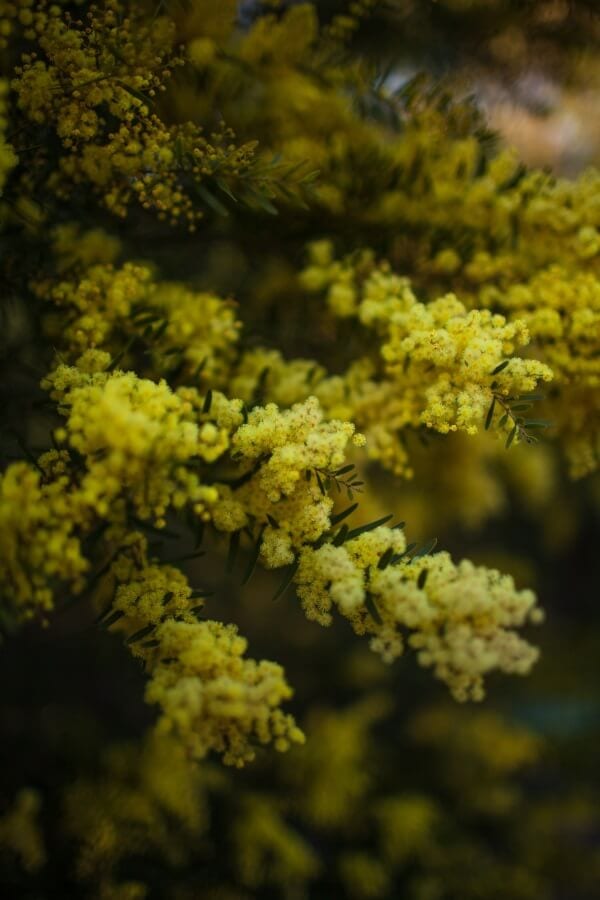
The golden wattle (Acacia pycnantha Benth), is the national floral emblem of Australia which displays the national colors, gold and green when it’s flowering. Wattle is an extremely resilient plant that represents the resilience of the Australian people and can withstand the winds, bushfires and droughts that are quite common throughout the country.
The golden wattle was used long before the advent of Europeans to Australia. The indigenous people of Australia used to make a toffee-like, sweet substance from the gum of golden wattle by soaking it in water and honey and they also used the tannin of its bark for its antiseptic properties.
Golden wattle has been featured in many Australian stamps as well as awards. Since recently, it has been used as a symbol of reflection, remembrance and unity throughout the country and in 1988, it was unofficially approved as the national floral emblem of Australia.
Uluru
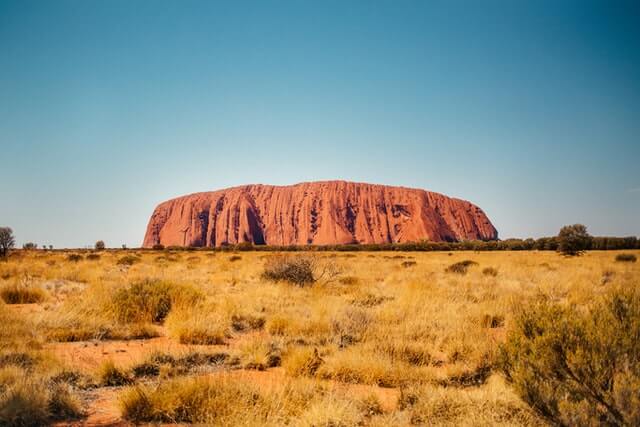
Famously known as ‘Ayers Rock’, Uluru is a large rock formation made of sandstone and located in central Australia. The rock is highly sacred to the Aboriginal people who live in this area and gave it its name. In 1873, a surveyor called William Gosse found the landmark and named it ‘Ayers Rock’ after Sir Henry Ayers, the Chief Secretary of South Australia at that time. Since then, it has been called by both names.
There are many Aboriginal myths, traditions and legends surrounding Uluru. The Aboriginal people believe that anyone who takes rocks from it will be cursed for life and suffer great misfortune. There have been several instances where people who had removed bits of rock from the formation had tried to return them, attempting to remove the said curse. For the Aboriginals, Uluru isn’t just a rock, but a resting place for ancient spirits in the area.
Uluru is now listed as one of the UNESCO World Heritage Sites and a majority of the region where it’s located is protected under the Uluru-Kata Tjuta National Park.
It’s important to note that climbing Uluru was banned in 2019 out of respect for Indigenous beliefs.
Summing Up…
Australian symbols are unique, with many of them found nowhere else in the world. These symbols reflect the geographical isolation, the unique culture and history of the Aboriginal people, and the resilience and mateship of the Australian people.
Some symbols of Australia like the national flag are legislated as official symbols. However, others like the wattle and the kangaroo morphed from being just popular symbols to official ones over time. Other symbols, like the billy and the boomerang were symbols of the continent for years before the nation even came into existence and these are now considered nostalgic emblems of the country’s past.
